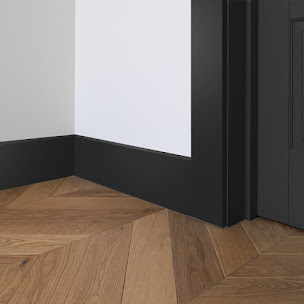Outdoor Stair Treads: Weather-Resistant Options
Material selection for outdoor Stair Treads is highly important because of both safety and durability issues and aesthetic considerations. Outdoor stairs are exposed to rain, snow, sunlight, and temperature changes. In that case, the use of weather-resistant materials will raise their useful life expectancy and performance while reducing the burden related to maintaining them.
Composites
The composite treads are very durable since they have wood fibers and plastic; this means these stair treads have high resistance to moisture, rot, and insects. In addition, their usage can sustain any extreme weather conditions without deformation, cracking, or discoloration. Moreover, composite treads require low maintenance since one needs only soap and water to clean them from time to time.
Advantages:
- Excellent resistance against moisture and UV rays.
- Available in different colors and textures to simulate wood.
- Long life span, eco-friendly options.
Considerations:
- More expensive upfront as compared to traditional wood.
- Slippery when wet; hence, those options that can be textured or grooved would be highly recommendable.
Concrete:
Concrete stair treads are weather-resistant and very suitable for areas with high traffic. In fact, it is virtually impervious to moisture, rot, and pests; thus, it serves perfectly outdoors. Besides, you can improve the appearance of concrete using stains, stamps, or aggregate.
Advantages:
- Excellent strength and durability.
- Minimum maintenance requirements.
- Custom designs and finishes are possible.
Considerations:
- Can be expensive to install and repair.
- Possibly prone to crack with time as temperature fluctuates.
Natural Stone
Natural stone Stair Tread Covers options include granite, slate, and even limestone. Of course, this can be a hassle when giving a very specific premium look rather than the very modern one you may want. It possesses excellent resistance due to weather phenomena and hence is increasingly used in luxury outdoor architecture. Natural stone, with proper finishing or texturing, is slip-resistant due to its etched surface, with grooves cut into it a safety feature too.
Advantages:
- High-end aesthetic appeal.
- Long-lasting, standing against the weather elements.
- Slip-resistant surfaces available.
Considerations:
- Expensive upfront cost.
- Heavy material, needing solid structural support.
Metal
Other weather-resistant options include metal stair tread covers, and among them, aluminum and steel are preferred. Aluminum is lightweight, resists corrosion well, and requires very little maintenance, whereas galvanized steel is extremely strong and resistant, owing to the zinc protective coating against rust.
Advantages:
- Weatherproof and durable.
- Available with anti-slip designs.
- Lightweight aluminum or heavy-duty steel.
Considerations:
- May be slippery if the surface is not treated with anti-slip coating.
- Steel may be susceptible to corrosion concerns and might require periodic maintenance.
Rubber and PVC
Rubber and PVC Anti Slip Stair Treads rank as synthetic and provide superior slippery resistance, even in inclement weather. For this reason, they are also commercially applied most often but might work just perfectly well for residential outdoor stairs in their own light. These materials are effortless to clean or install and largely come available on adhesive-backed treads or mats.
Advantages:
- Superior slip resistance, even in wet conditions.
- Affordable and easy to install.
- It resists cracking and does not fade.
- Considerations:
- May not have the aesthetic appeal of natural materials.
- Limited color and design options.




Comments
Post a Comment